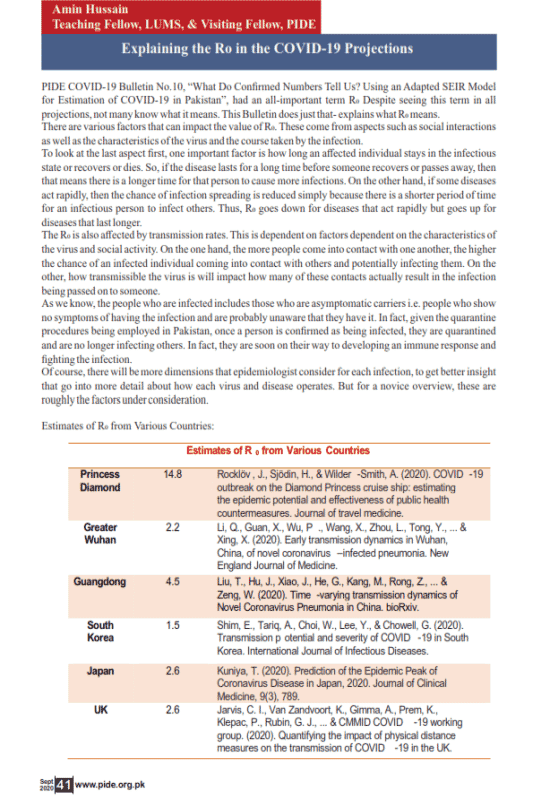
Pakistan Institute of Development Economics
- Home
Our Portals
MenuMenuMenuMenuMenuMenuMenu - ResearchMenuMenuMenuMenuMenuMenuMenu
- Discourse
- The PDR
- Our Researchers
- Academics
- Degree Verification
- Thesis Portal
- Our Portals
Explaining the Ro in the COVID-19 Projections
PIDE COVID-19 Bulletin No.10, “What Do Confirmed Numbers Tell Us? Using an Adapted SEIR Model for Estimation of COVID-19 in Pakistan”, had an all-important term Ro Despite seeing this term in all projections, not many know what it means. This Bulletin does just that- explains what Ro means. There are various factors that can impact the value of Ro. These come from aspects such as social interactions as well as the characteristics of the virus and the course taken by the infection. To look at the last aspect first, one important factor is how long an affected individual stays in the infectious state or recovers or dies. So, if the disease lasts for a long time before someone recovers or passes away, then that means there is a longer time for that person to cause more infections. On the other hand, if some diseases act rapidly, then the chance of infection spreading is reduced simply because there is a shorter period of time for an infectious person to infect others. Thus, Ro goes down for diseases that act rapidly but goes up for diseases that last longer. The Ro is also affected by transmission rates. This is dependent on factors dependent on the characteristics of the virus and social activity. On the one hand, the more people come into contact with one another, the higher the chance of an infected individual coming into contact with others and potentially infecting them. On the other, how transmissible the virus is will impact how many of these contacts actually result in the infection being passed on to someone.



